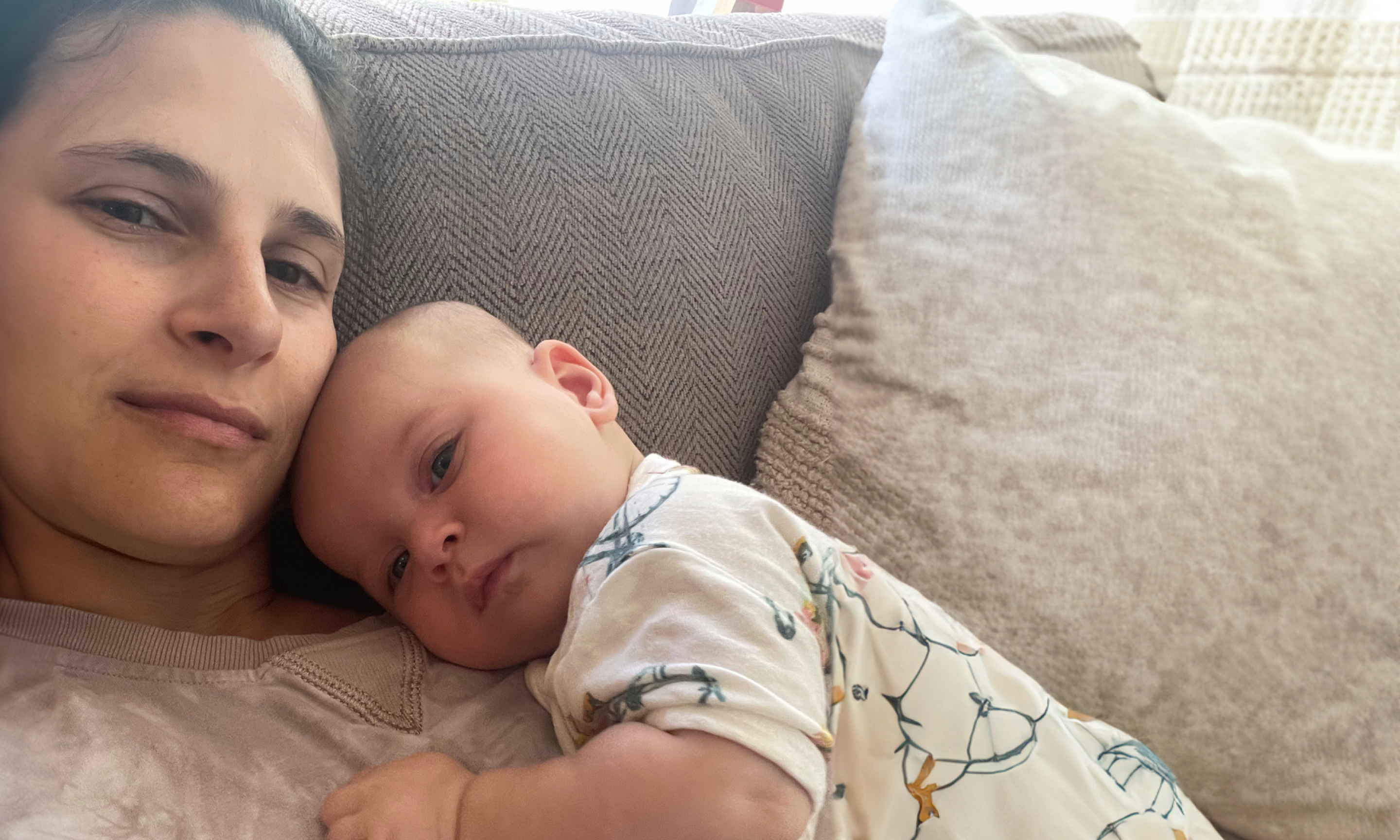
How Much Sleep Does a Toddler Need?


IN THIS ARTICLE
Key Takeaways
How much sleep does a toddler need? How can you set up a bedtime routine? These are common questions from many parents of toddlers, who are looking for help with sleep!
We’ll take you through everything you need to know including toddler bedtimes, how to help your toddler sleep better, tips for managing nightmares and night terrors, and how to transition your little one from a crib to a toddler bed. Sleep is so important for your toddler’s happy and healthy development, and if your toddler sleeps well, so can your whole family!
How Much Sleep Does a Toddler Need?
Experts recommend toddlers get about 10 to 12 hours of sleep a night, plus one or two naps. However, each child is unique, so your toddler may need a little more or less.
How much sleep your little one needs — especially in the first two years of life — can be influenced by many things, including genetics and temperament.
Instead of going by the clock, it might be more beneficial to pay attention to your toddler’s behavior. If your toddler is tired or irritable during the day, she may need an earlier bedtime, or an additional nap.
In Summary
Toddlers typically need around 10 to 12 hours of sleep at night, plus naps, but each child is an individual and has unique sleep requirements. You may need to increase the amount of time your toddler sleeps if you notice he is cranky or sleepy during the day.
How to Create a Bedtime Routine for Your Toddler
When it comes to your toddler getting a good night’s sleep, a bedtime routine can really help. You can incorporate a bedtime routine as early as 4 to 6 months, but if you haven’t yet, now is a good time to start.
The key with creating a simple bedtime routine is to keep things calm and consistent in the period before your toddler’s bedtime so that your child learns to recognize that the time for sleep is coming.
A bedtime routine helps your child wind down so that she’s relaxed enough to fall asleep.
Here are some ideas for what you can include in your toddler’s bedtime routine:
It’s also a good idea to
In Summary
A consistent bedtime routine can help mark the end of the day for your toddler, and helps him become relaxed enough to fall asleep more easily when bedtime rolls around. Reading a story together, giving your toddler a soothing warm bath, or dimming the lights and encouraging quiet play can all be part of a bedtime routine.
Don’t miss these must-watch sleep tips from a pediatric sleep consultant.
Toddler Naps
Most toddlers need about one to two naps a day, each lasting about one to two hours. Keep in mind that as your toddler grows her naptime needs may change. Around half of all toddlers may need only one nap by the age of 15 months.
Creating a nap schedule can help your toddler sleep better. You can start by tracking your toddler's sleep times and watching for any signs of sleepiness; soon you’ll notice when your tot is tired during the day. Schedule naps when your little one is most likely to be tired, and stay consistent each day.
In Summary
Naps are important for toddlers, and many toddlers need one or two naps a day, each about one or two hours long. Try to keep naptimes consistent but pay attention to your toddler’s needs as she grows. For example, in time, she may need fewer daytime naps, and the afternoon nap may need to be shorter so that she can fall asleep more easily at night.
How to Help Your Toddler Sleep Better
One of the best ways to help your toddler sleep better is to establish a consistent sleep routine. Think of going to sleep like a ritual. Maybe your little one’s routine can look something like this:
If you already have a routine, you might even notice your little one complains or gets irritable when that routine isn't followed, such as when you travel.
Sometimes, though, your usual bedtime ritual won’t work, and your determined toddler may refuse to go to sleep.
This could be because your little night owl wants to have a sense of control over his routine. Try giving him a few choices: let him pick out his pajamas, or choose the story you’ll read, or decide on the soft bedtime music to fall asleep to.
Another reason your toddler may be struggling to sleep is that he may be afraid of the dark or have separation anxiety, in which case you may find that a night-light or a transitional object like a security blanket could help.
Toddler sleep training can help your little one learn how to fall asleep on her own and sleep through the night without crying out for you to comfort her.
In Summary
There are many strategies you can try to help your toddler fall asleep more easily, and to help her sleep through the night without crawling out of bed to come and find you. A calming and consistent bedtime routine can help, as can giving your toddler some choices about some elements of her nighttime ritual. You might also like to try some sleep training techniques.
How to Put Your Toddler to Sleep
Sometimes, it can be a challenge to put your toddler to sleep. With all the exciting things going on during toddlerhood, sleep may be the last thing on your child’s mind.
Perhaps your little one has a new skill, like walking, that he is eager to practice. If you have guests or your toddler has a new sibling, he may not want to miss out on all the fun.
In some cases, your child may have too much energy at bedtime because the afternoon nap was too long or too late in the day.
Maintaining a consistent bedtime routine is a big step toward encouraging your toddler to fall asleep at bedtime. Be firm that bedtime is bedtime, and if your toddler crawls out of bed, put her back to bed and remind her that it’s time to sleep and that she needs to sleep in her own bed.
Don’t let your bossy 3-year-old get “just one more” story out of you, and don’t stray too far from your normal routine, as this will only encourage your toddler to push the boundaries even more the next night.
In some cases, depending on the cause, it could just be a few days of disruption before your toddler returns to his normal sleep habits.
Read more about how to put your little one to sleep for additional advice and tips.
In Summary
There are many reasons why your toddler may struggle to fall asleep from time to time. Your toddler may not be tired yet, she may be too excited to fall sleep, or she may be afraid of the dark. Things like keeping to your toddler’s normal bedtime routine, being firm with your toddler about staying in bed, and reassuring your toddler if she’s scared of something in her room can all help depending on what’s causing the disruption.
Moving From the Crib to the Bed
You may be wondering when your growing toddler will be ready to move from a crib to a bed. There is no hard and fast rule, but if your child is around 35 inches tall or seems close to being able to crawl over the crib rails, it’s probably time to make the transition. If you’re in any doubt, ask your child’s healthcare provider for personalized advice.
When you do make the switch, your toddler may be unsettled for the first few nights. You may need to try sleep training techniques like “camping out” in your toddler’s room while he gets used to his new sleeping quarters.
This technique involves you sleeping in a sleeping bag or on a mattress in your toddler’s room. Over a few nights, sleep further and further away from your child’s bed until your toddler can fall asleep without you there.
Placing a mattress on the floor right next to the bed or adding guardrails to the bed can help prevent your child from accidentally rolling out of the bed and hitting the floor. After all, this is your child’s first try at sleeping in a bed without rails all the way around, so it might take some getting used to!
Overall, try to make it fun. Many toddlers love the idea of doing something that “big kids” get to do, so the transition to a toddler bed may be easier than you think.
In Summary
Once your little one is around 35 inches tall, it's time to transition from the crib to a bed. You may need to do it even sooner if your toddler is showing signs of being able to crawl over the crib rails, even with the mattress at the lowest setting. Use guardrails to stop your toddler from falling out of the bed, or place a mattress on the floor next to the bed to ensure she has a safe landing in case she falls.
Sleep Safety for Toddlers
Keep your toddler safe at night by taking a few safety precautions:
In Summary
Sleep safety is very important. Move your toddler to a bed before she is able to crawl out over the crib rails. Keep her sleeping area free from cords. If your toddler is still in a crib, keep it clear of toys and pillows, as she could use these to boost up on and crawl out of the crib. If she has just transitioned to a toddler bed, consider adding guardrails or placing a mattress next to the bed.
Nightmares and Night Terrors
Everyone has bad dreams from time to time, but for a toddler who doesn’t yet understand what a dream is, vivid dreams can be very disturbing. Your child may wake in the middle of the night crying and afraid.
Hold him and talk to him softly if he wakes up from a bad dream and calls for you. Tell him that everything is OK and that it was just a dream. Stay with him until he’s calm and relaxed. Then put him back to sleep.
Night terrors, on the other hand, are a little different. You may notice your toddler thrashing in bed with open and terrified eyes. She may not respond when you talk to her. When she’s having a night terror, she’s neither awake nor having a nightmare.
A night terror is a form of sleep behavior that takes place during deep sleep. While it looks scary, your child won’t even remember it when she wakes up.
It can be upsetting to watch your child during a night terror and to feel know that you can’t comfort your little one. What you can do is to watch over her patiently until she returns to sleep.
Do not try to wake your child if he is having a night terror — this will just leave him disoriented and confused. The best thing you can do is to make sure he doesn’t hurt himself as he thrashes around. Make sure he won’t fall off the bed, and keep an eye on him until he calms down.
If you notice your little one has a night terror at the same time each night, you can try to wake her up around 15 to 30 minutes before, to see if this helps prevent it.
Usually, a night terrors lasts about 5 to 15 minutes; soon after that, your child will settle back to normal sleep. It can take up to 30 minutes for things to completely calm down. Most children grow out of night terrors in time, and they are not a cause for concern.
Speak to your child’s healthcare provider if you have any questions or concerns about night terrors.
Check out the table below to learn the difference between nightmares and night terrors:
In Summary
Many children have nightmares or night terrors from time to time. A nightmare is a bad dream your child wakes up from. If your toddler calls out for you, comfort him until he is calm enough to fall back asleep. A night terror can look scary to you but your toddler won’t remember it once he wakes up. Your child will likely grow out of night terrors in time.
Teeth Grinding During Sleep
You may notice your child grinds or clenches his teeth or jaws in his sleep. Teeth grinding — known also by its medical name, bruxism — is quite common in kids. Experts say that as many as 2 to 3 out of every 10 children will either grind or clench their teeth. The good news is most children outgrow this problem.
Teeth grinding typically happens during deep sleep or when a child is under stress. You can try to avoid it by having a relaxing evening routine before bed, so your little one is nice and calm for sleep.
If you have any questions or concerns, contact your child’s healthcare provider or dentist for expert advice.
In Summary
About 20 to 30 percent of children grind their teeth at some point. It can happen during deep sleep or when a child is under stress. Although most of the time, your child will grow out of it, speak to your child’s dentist if you’re concerned about how it may affect your little one’s teeth.
FAQs at a Glance
There is no standard bedtime for a 2-year-old. Experiment with a bedtime that works for your child. You may need to adjust naptimes if your child isn’t tired enough by bedtime.
The Bottom Line
Toddlers need a lot of sleep and benefit in many ways from getting a good night’s sleep. But as you no doubt know, getting your toddler to fall asleep is more challenging than just turning off the lights and saying “good night.” This is especially the case if your child is excited about something that happened during the day, or if your child is experiencing separation anxiety. Having a consistent bedtime routine, ensuring that your toddler has a comfortable sleep environment, and being firm when it comes to sleep times can all help your toddler learn that when it’s bedtime she needs to be tucked up in bed ready to rest. You may also need to play around with your toddler’s sleep schedule — being overtired or not tired enough can affect your child’s ability to sleep. Speak to your child’s healthcare provider if you’re ever unsure about how much your child should be sleeping and at what time. It's great when your toddler can go to sleep and stay asleep independently. And when that happens, you and your toddler will both benefit from being well rested the next day. Hang in there — those sleepless nights associated with babyhood and toddlerhood may soon be a thing of the past!










